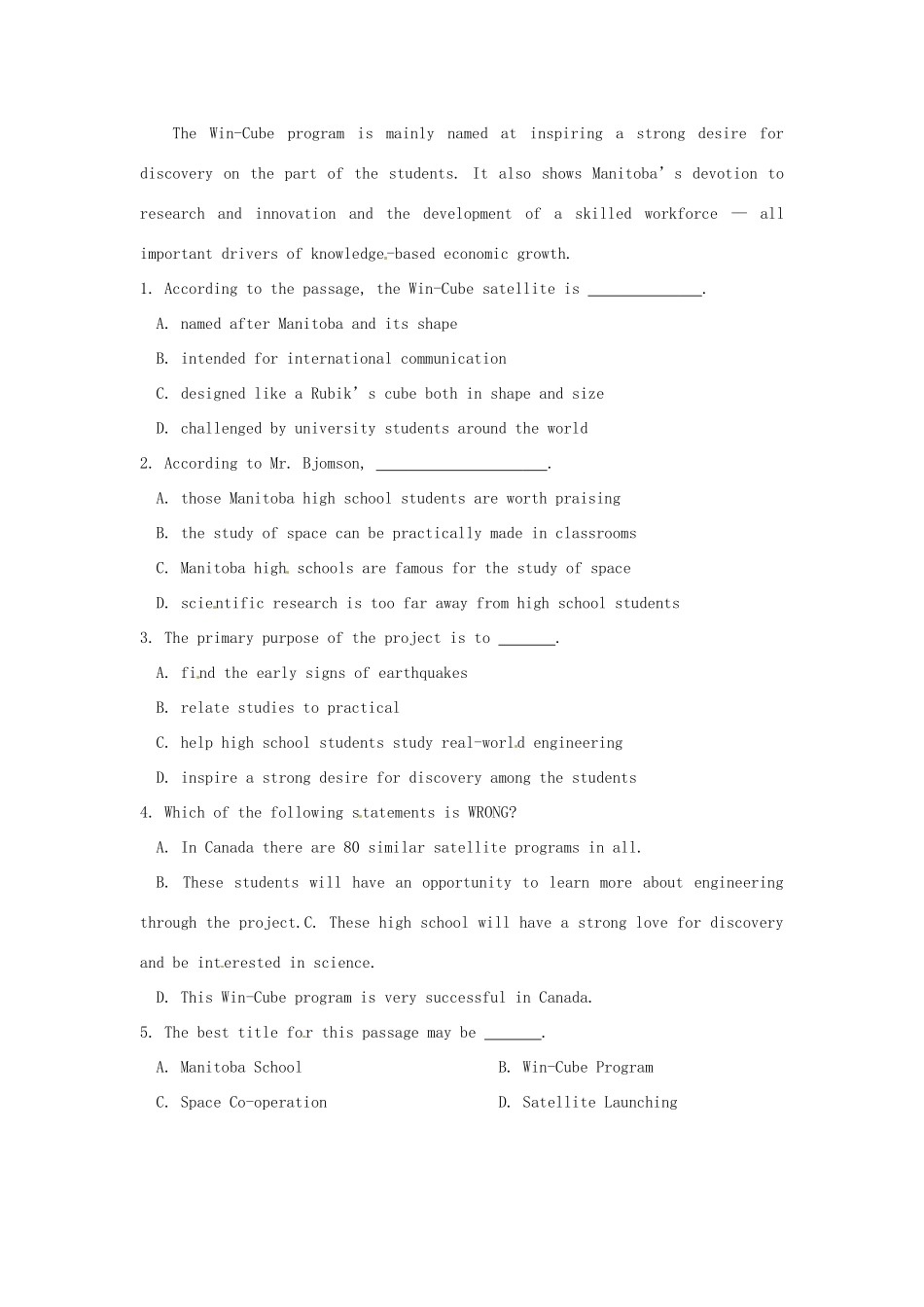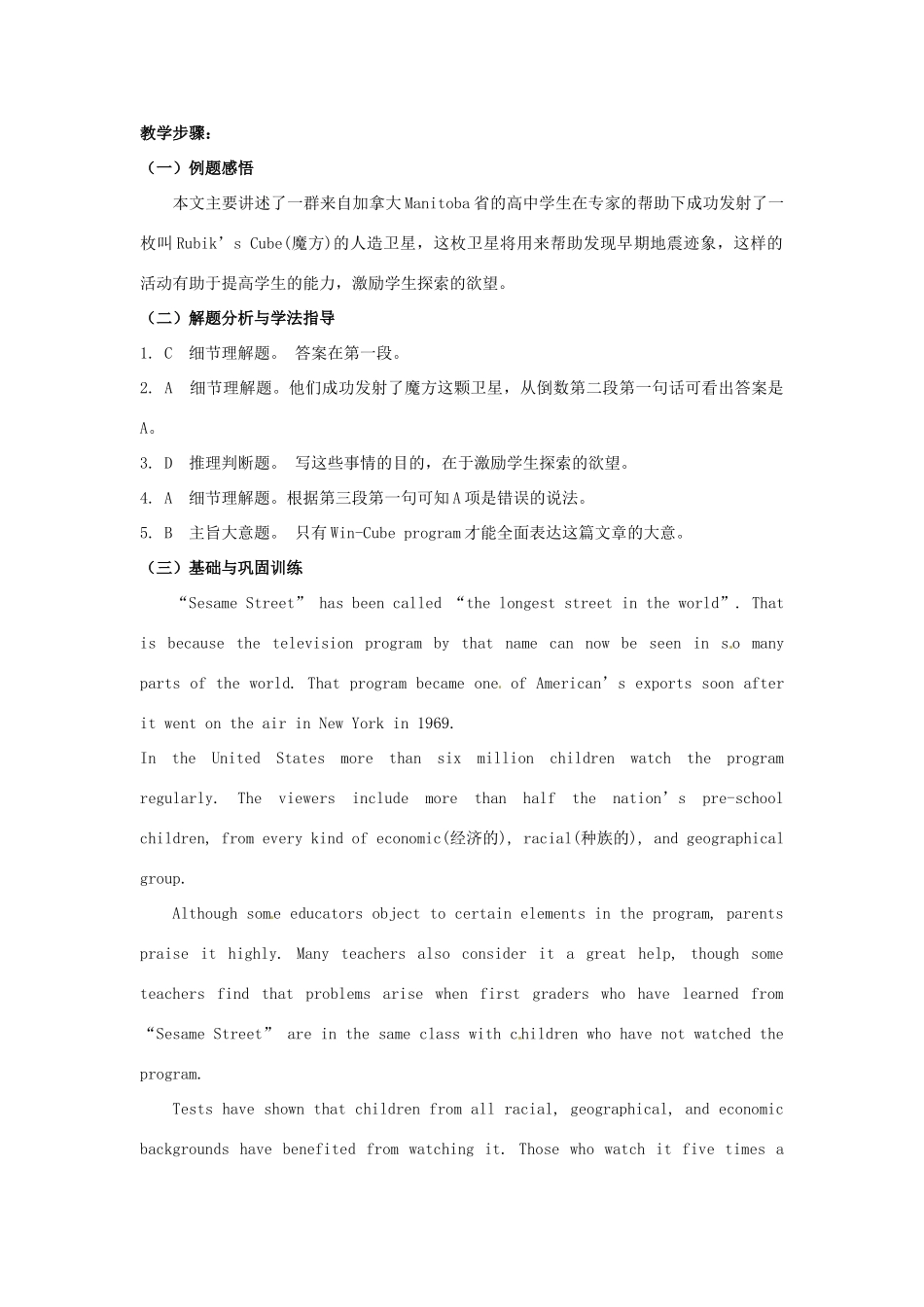江苏省泗阳中学 2013 届高三“艺体类”专项复习:阅读专题三教学素材:In June, 2007, a group of students from eight high schools in Winnipeg, the capital of Canada’s Manitoba province, will begin test-launching (试发射) a satellite the size of a Rubik’s cube. The one-kilogram Win-Cub satellite, named for its home city and its shape, will be put into low orbit. Once in space, it can perform for a few m onths or up to several years, communicating information that could help find the signs of earthquakes. There are 80 similar satellite projects worldwide, but this is the first high-school based program of its kind in Canada. 30 Manitoba high school students are having a hand in designing and building the satellite, in cooperation with aerospace ( 航 空 航 天 的 ) experts and 10 students from the University of Manitoba, and with support from two other organizations. The Win-Cube project is not something that goes on a piece of paper; it is real-world engineering, allowing high school students to have an opportunity to learn more about the exciting world of engineering through their participation in this challenging program. It is also taken as a wonderful example of the unique partnerships within Manitoba. Designing, building and launching a satellite with high-school participation will bring this world-class educational project into reality and Manitoba closer to space. “These Manitoba high school students deserve congratulations for their enthusiasm, innovation ( 创 新 ), and a strong love for discovery,” said Education, Citizenship and Youth Minister Peter Bjomson. “We want to make science more relevant, interesting and attractive to high school students by showing them how classroom studies can relate...


